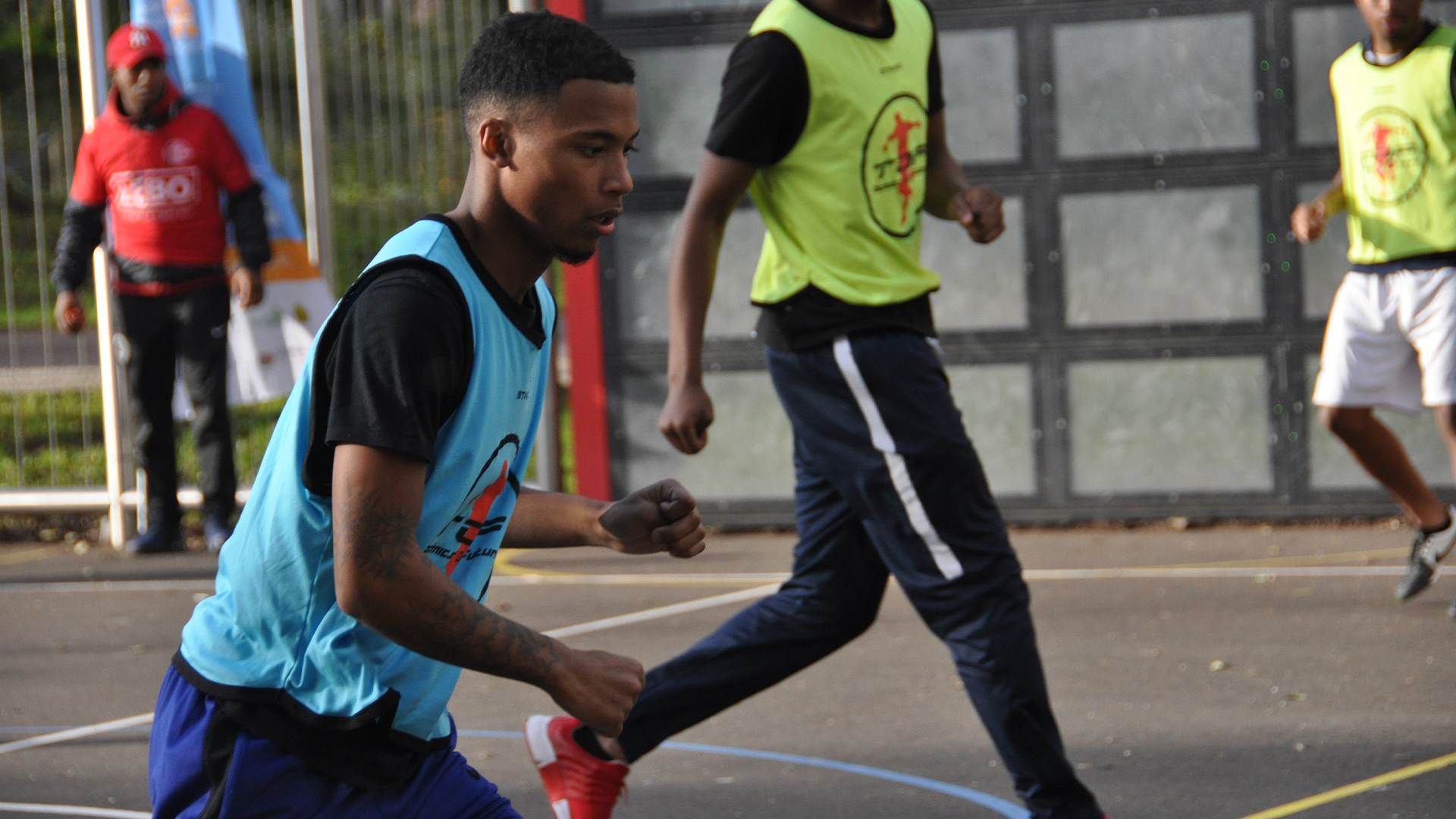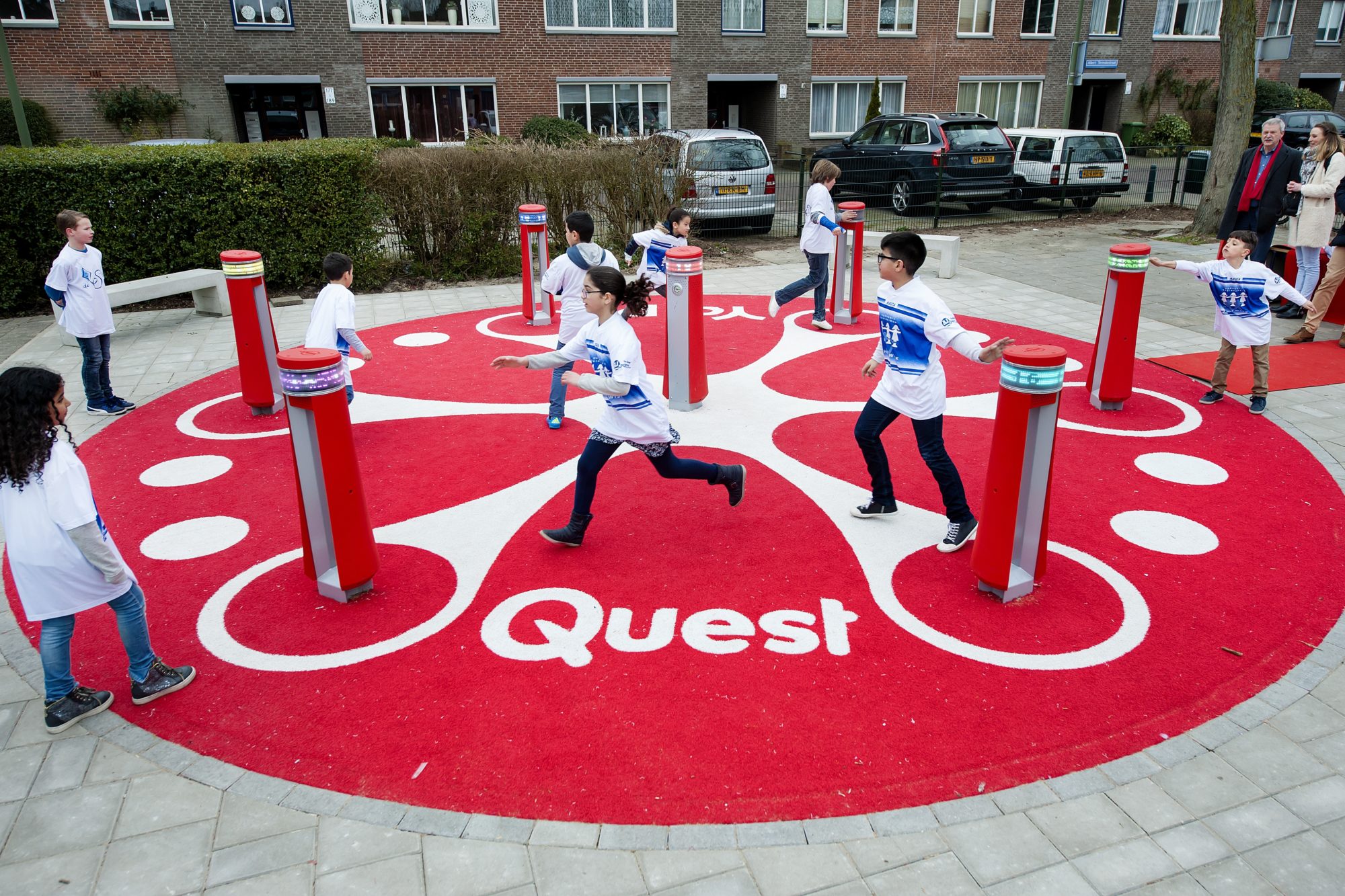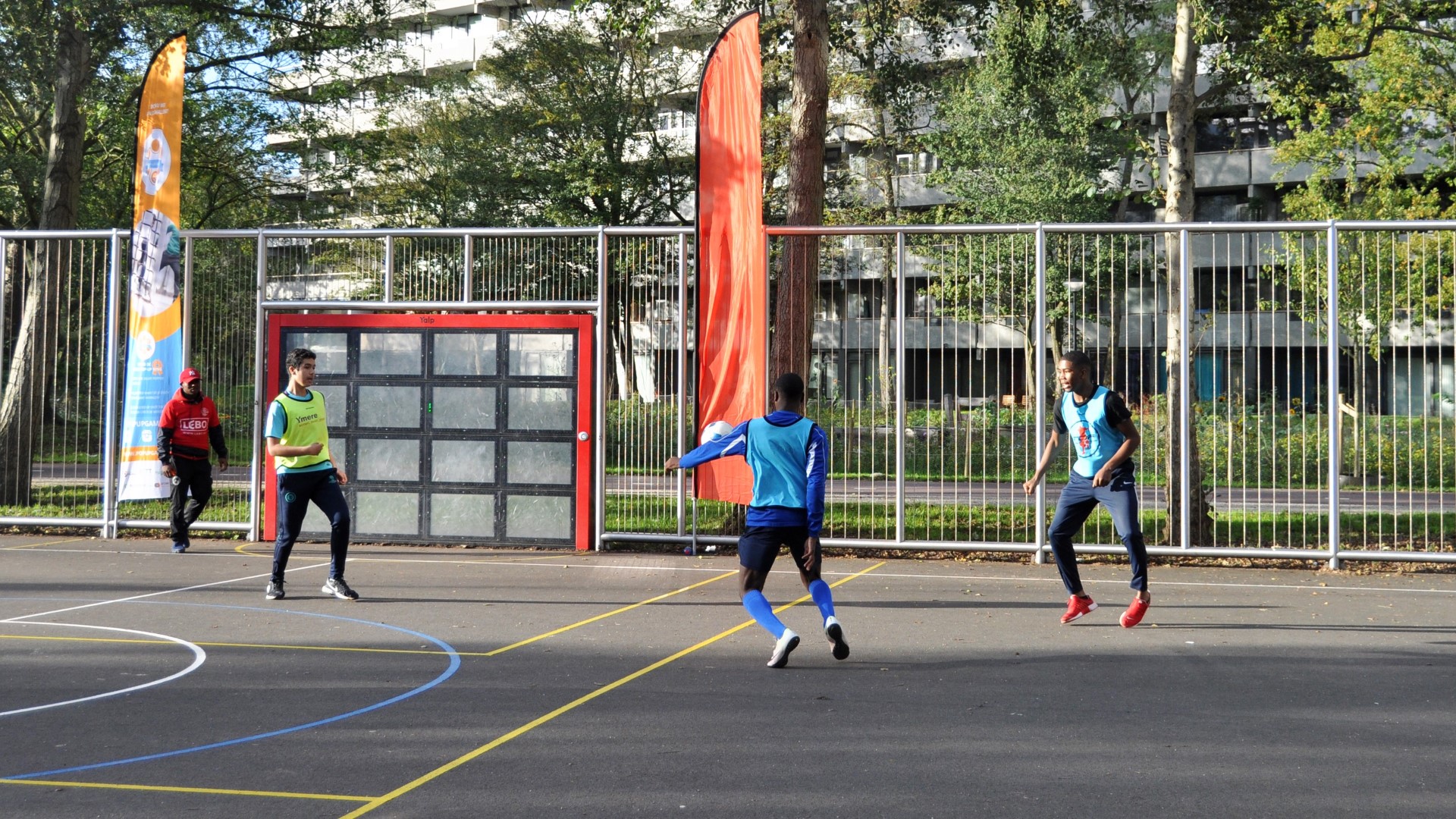More healthcare experiences
Interactive play experiences in the healthcare sector!
Read more
Childhood obesity is becoming more prevalent. In 2016, almost 14 percent of children between the ages of 4 – 18 were overweight. Physical activity is one of the solutions to this rising problem. The City of Amsterdam is using interactive playground installations, amongst others, to encourage children to play sports and be active in public spaces. The ninth interactive playground installation was recently completed in Amsterdam. Below is an interview with Hafid Ouaali, Sports and Facilities Advisor.
– Written by Manon van Ketwich
What problem does it solve?
Amsterdam’s public spaces are where urban life takes place and flourishes. Efficient spatial planning is more critical than ever with the ever-growing number of residents and new homes’ construction within the city limits.
In addition to contributing to resolving the housing shortage, the city is also committed to promoting sports and physical activity. Investing in sport means investing in public spaces. If we want to get as many people as possible playing sports, we’ll need additional square meterage to meet increasing demand.
Initiatives such as the Quest Junior Memo offer a particularly good solution due to the playground structures’ relatively small size. The ease with the interactive element can be integrated with the public space. In addition to the benefits of spatial planning, interactive play is also an essential aid for combatting obesity and children’s inactivity. The current generation of children is growing up with tablets, smartphones, and online gaming, due to which play has now taken on a completely different meaning. To encourage children to engage in physical activity, static games are now being combined with physical activity. The additional competition element always challenges users to broaden their horizons, particularly in children who dislike physical activity.

Amsterdam aspires to position itself as an urban city where physical activity is an integral part of spatial design. Due to urbanization and increasing pressure on public spaces, we face the challenge of keeping the city liveable despite accelerated urbanization, combined with different living, working, and moving cities. The Quest Junior Memo is ideally suited to a city like Amsterdam due to its dynamics. A spring rider will always be a spring rider, but the Memo program can be adapted continually, and as a whole, it fulfills the demands of this era.
The sports and games space continues to evolve and is exceptionally sensitive to new trends and developments. It’s essential to have the confidence to invest in new initiatives to meet the new generation of children’s needs. Interactive play is a relatively new phenomenon in our capital city. I am convinced that this new way of playing can rely on sufficient support and interest once it becomes tangible to new users.
Furthermore, the combination of physical activity and education is a development we are following closely. For example, we are swamped designing school playgrounds in Amsterdam in a specific way to make them suitable for (environmental) education. As such, the Quest Junior Memo is a useful addition to the school’s educational curriculum.

As a Physically Active City, our vision of Amsterdam seeks to equip the city so that it invites all residents to engage in recreation, sports, and play, whether consciously or unconsciously. Exercising more is essential for good health. Therefore, we are trying to get young and old moving in the most diverse ways, for example, by creating more space for cyclists and pedestrians, placing play incentives in busy places, or installing challenging playgrounds.
We currently have nine interactive play structures in Amsterdam. Our updated playground plan states that we’ll focus more on trends and developments and, thus, interactive play. Traditional play installations will naturally continue to be a part of our stock of playground equipment.
Read more about interactive play in sports areas and healthcare solutions!
If you would like further information on how the interactive playsets can benefit you; We would be more than happy to join forces with you and find the best solution tailored to your wishes.
Until now, you’ve known us as Yalp, but in 2024, we’re undergoing an exciting transformation into Lappset. But not much will change! We remain steadfast in our commitment to our core values and are thrilled to operate as a brand with more than 50 years of experience that embodies a strong culture and work ethic.
Yalp becomes Lappset: Movement for every heartbeat.
In the Netherlands, we have already made the jump and are now known as Lappset Nederland! Are you looking to create inspiring spaces in the Netherlands? Follow the link below to see the exciting changes we’ve made to our website while staying true to our mission and vision.
Let us know what we can help you with and leave your personal details. We will contact you as soon as possible!
Do you have any questions, would you like to receive further information or would you like to make an appointment with one of our sales representatives? Then fill out the contact form, give us a call or write an e-mail!
Do you have any questions, would you like to receive further information or would you like to make an appointment with one of our sales representatives? Then fill out the contact form, give us a call or write an e-mail!